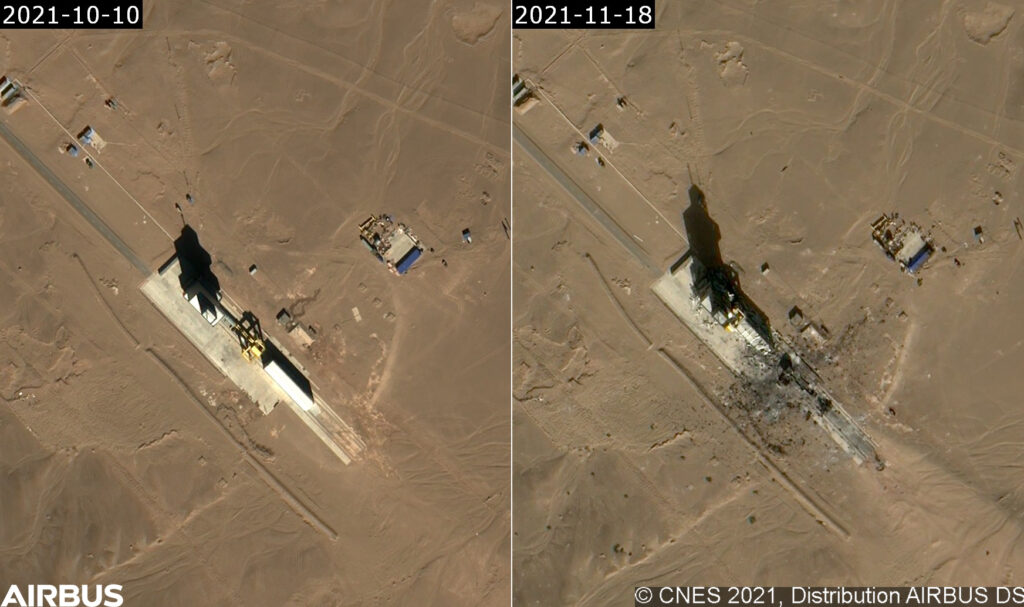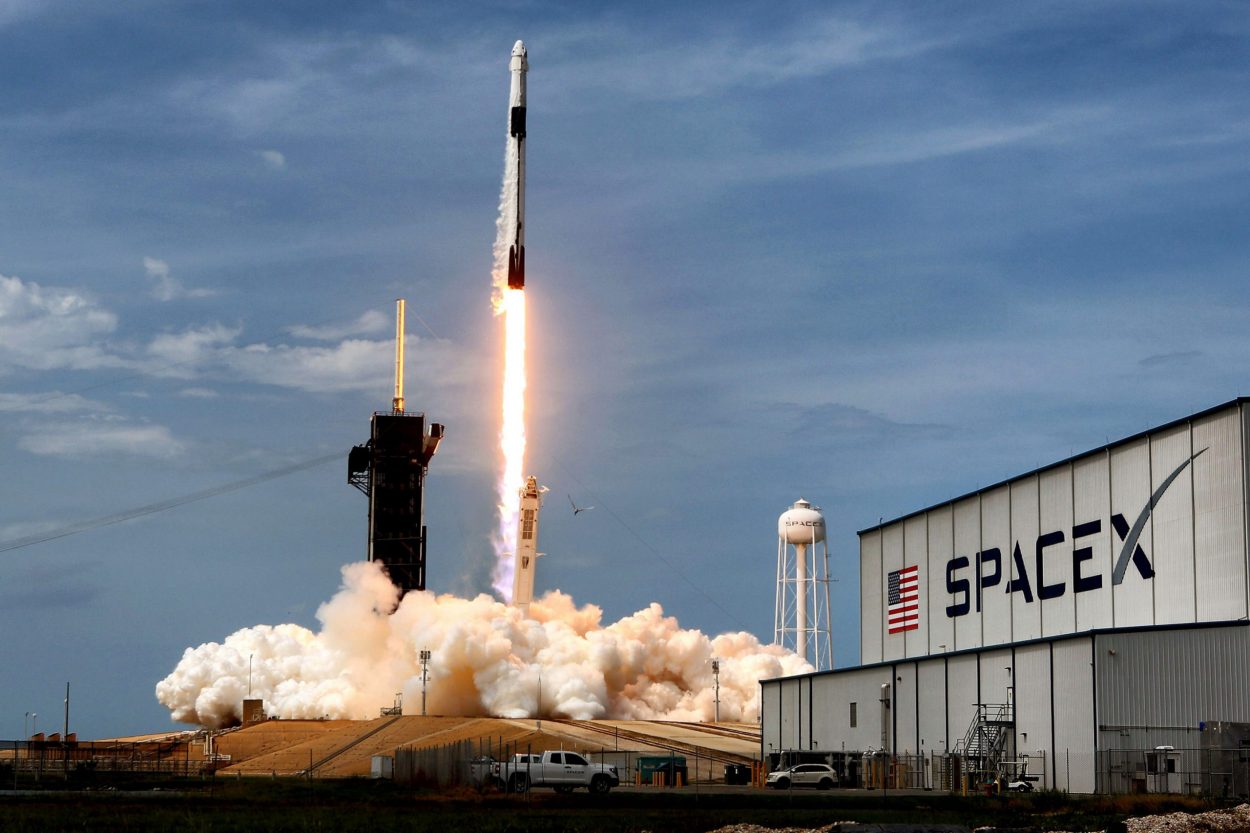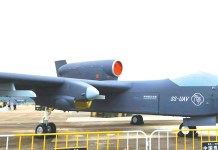As an inherent aspect of state propaganda, China has a long history of concealing news that can harm its international reputation and therefore only boasting about its accomplishments that depict it as a worthy rival to the United States.
‘Storming Ahead’ – China Surpassed All Of Europe In 2021 To Take Pole Position In Offshore Wind Power Race
A slew of satellite photographs reveals that an explosion significantly destroyed rocket facilities at China’s Jiuquan Satellite Launch Center in October 2021, reported Space News.
Gobi Desert houses the Jiuquan Satellite Launch Center. It has been in operation since 1958. Jiuquan has hosted numerous critical orbital launches throughout history, including all human missions under the Shenzhou program.
The incident occurred at the space facility in October of last year. The development was first brought to the public’s attention by space enthusiast Harry Strange.
High resolution satellite imagery shows that there was an explosion at a launch pad south of the Jiuquan Satellite Launch Center in October 2021.
The location of this pad is 40°50'13.3"N, 100°10'31.8"E (https://t.co/KjLngbke1t). pic.twitter.com/Qckwaqtcrj
— Harry Stranger (@Harry__Stranger) June 10, 2022
He noticed a damaged facility 16 kilometers southwest of Jiuquan’s two main launch complexes after looking through images taken by Airbus and CNES satellites in October 2021.
However, the explosion did not affect the pair of launch pads utilized by China Aerospace Science and Technology Corporation (CASC) for hypergolic Long March rocket launches for human spaceflight, civil, military, and research missions.
The explosion occurred between October 15 and 16, 2021, according to subsequent analysis of images captured by Planet’s Super Dove satellites.
On October 15, China launched the Shenzhou-13 crewed mission from Jiuquan. The explosion did not affect CASC, the country’s main space contractor, and critical operations.

Chinese media did not cover the explosion, according to Space News. Considering the nature of launches at Jiuquan, the facilities were most likely tied to non-CASC firms testing and assembling solid rockets, the report said.
CASIC, a state-owned defense contractor with space ambitions, is building a series of solid rockets for orbital missions. It has set up infrastructure at Jiuquan to launch Kuaizhou-1A and larger Kuaizhou-11 rockets using transport erector launchers rather than a launch pad and support structure.
However, both of these missions failed. The former failed in December 2021 after returning to flight earlier in the autumn. On the other hand, the Kuaizhou-11 was grounded after its first and only launch broke down in 2020.
‘Global Leader’ – China Claims It Has Surpassed US In High-Speed Comm Tech With World’s Largest Network Infra
The Kuaizhou-11 was scheduled to fly again before the end of 2021. According to a press statement from CASIC subsidiary ExPace, the final assembly for a launch was underway in August. No such launch attempt has been documented.
Push For Solid Rocket Launch Capabilities
The launch of Kuaizhou rockets from Jiuquan is part of a more significant effort to enhance solid rocket launch capabilities, including private launch service companies.
However, a handful of solid-state launch vehicles have already failed. Last month, the private business iSpace lost its third mission in a row, throwing doubt on the Hyperbola-1 rocket’s future. The launch of Landscape and OneSpace in 2018 and 2019 were not successful.
In July 2019, Beijing-based iSpace became the first Chinese company to place a satellite outside the state-owned space sector. However, the company experienced two successive failures in February and August last year.
Galactic Energy, another Chinese company, has successfully launched its Ceres-1 rocket twice in a row, with a third planned for July.
Meanwhile, CAS Space, jointly initiated and established by the Chinese Academy of Sciences and a team in the domestic aerospace field, is gearing up for its first mission. The firm will launch The ZK-1A, designed to transport up to 2 metric tons of payload to low Earth orbit.
Crucial Part Of China’s Space Program
In the last few years, China’s government has attempted to build commercial space ecosystems outside the state sector, controlled by CASC, through incentives, legislative support, and a military-civil fusion technology transfer national plan.
These steps are considered a retaliation to the rise of commercial space activities in the United States, led by SpaceX and others. The most recent failure increases the pressure on subsequent launches to succeed.

Following a regulatory move in 2014, portions of the space sector became more accessible to private financing, with significant funding rounds becoming common. Supporting new infrastructures such as “satellite internet” and localities trying to recruit high-end technology space enterprises are part of China’s policy frameworks.
China considers private enterprises to have a role in creating a low-Earth-orbit communications mega constellation and executing commercial missions to and from the Tiangong Chinese space station.
- Contact the author at ashishmichel@gmail.com
- Follow EurAsian Times on Google News




